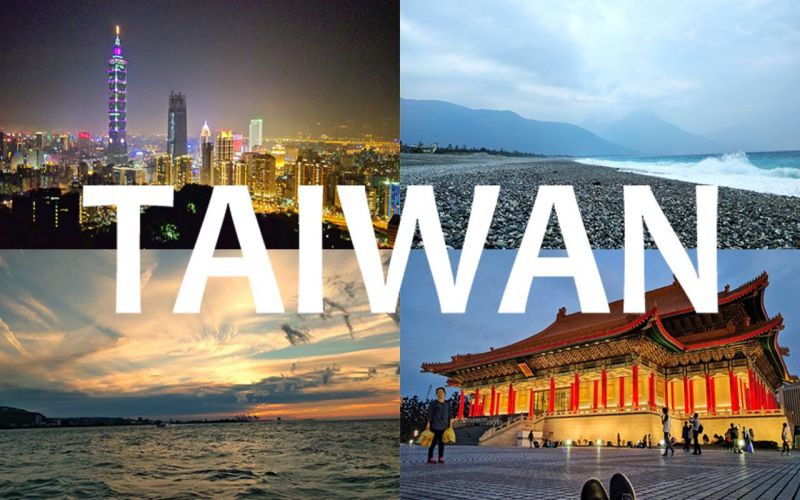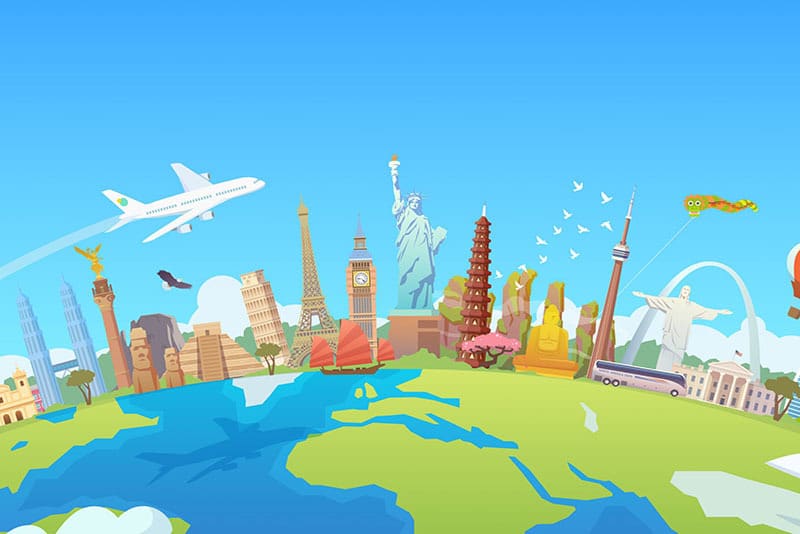Taiwan, also known as Taiwan, is an island located in East Asia, off the southeast coast of Mainland China, 350km south of the Philippines and 1070km north of Japan. Let’s learn about Taiwan with Hung Nguyen Education.
1. Geographic location:
Taiwan Island is located about 180 km from the southeast coast of Mainland China, with an area of 35,801 km². It occupies a position between the East China Sea to the north, the Philippine Sea to the west, the Luzon Strait to the south, and the South China Sea to the southwest. The island has a diverse terrain, with 2/3 of the area being mountainous areas that are difficult to pass, mainly concentrated in the east, while the west is a plain where residents mainly live. Taiwan’s highest peak is Yushan, reaching an altitude of 3,952 meters, and the island is ranked as the fourth highest island in the world.
Taroko National Park on the east side of the island is an example of geology, with canyons and rushing rivers creating a unique appeal.

2. Climate:
The climate in Taiwan consists of 4 seasons, equivalent to Vietnam: spring (March-April), summer (May-September), autumn (October-November), and winter (December-February). With a subtropical climate, the average annual temperature ranges from 25°C to 28°C. The north usually has heavy rain from October to March, while the south has hot summers with the southwest monsoon and rain. July, August and September are usually typhoon season in Taiwan. The climate is relatively similar to Vietnam, making working and adapting easy.
3. Population, language, currency:
- Taiwan’s population is about 23 million, with the capital Taipei having the highest population density.
- The main language is Mandarin Chinese, along with Taiwanese, Hakka and the languages of indigenous peoples.
- Taiwan money (Taiwan) includes both paper money and metal money.
4. Culture
Taiwan’s culture is unique and diverse, reflecting a blend of traditional and contemporary elements. With an exceptionally long history and great influence from Chinese culture, Taiwan shares many values, customs and traditions with China. The official language is Chinese, and Taiwanese culture is often considered part of Chinese culture. Besides, Taiwan retains many popular cultural features, from traditional festivals to spiritual rituals. Holidays such as Lunar New Year, Mid-Autumn Festival and Qingming Festival are celebrated across the island, often accompanied by traditional activities such as lighting lanterns, parades and enjoying specialties.
5. Cuisine
Taiwan, known as the “International Republic of Gastronomy,” views food as an art and a means of cultural expression. This country, with its long history, has created a diverse culinary heritage. Cooking in Taiwan is not only about applying cooking techniques from China, which have gone through thousands of years and become an art form, but also about the process of creating and harmonizing flavors. Respect for diners is central to Taiwanese cuisine, demonstrated through the use of spices, the variety of colors, flavors, and shapes of dishes. This characteristic is the reason why Chinese cuisine, originating from practical experience and harmony of taste, has become famous and attracted the attention of many diners.
6. Economy
Taiwan’s economy is characterized as a capitalist market economy with significant development in the industrial and industrial sectors. In 2019, the island nation’s nominal GDP reached 586.1 billion USD, with per capita income reaching 24,828 USD/person. Taiwan is considered one of Asia’s four economic Dragons, along with South Korea, Hong Kong and Singapore. The country is famous as one of the world’s leading manufacturing centers for microchips, computers and consumer electronics, with the most advanced technology.

Taiwan currently ranks 7th in terms of economic size in Asia and belongs to the group of advanced economies according to the International Monetary Fund. It is also ranked in the World Bank’s group of high-income countries and 15th globally according to the World Economic Forum’s Global Competitiveness Report. This success and important status are both the result of strong investment in research and development, as well as the successful transition from traditional manufacturing models to high-tech industries.






